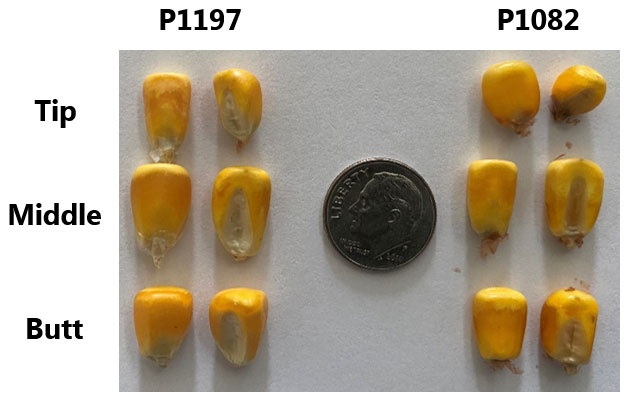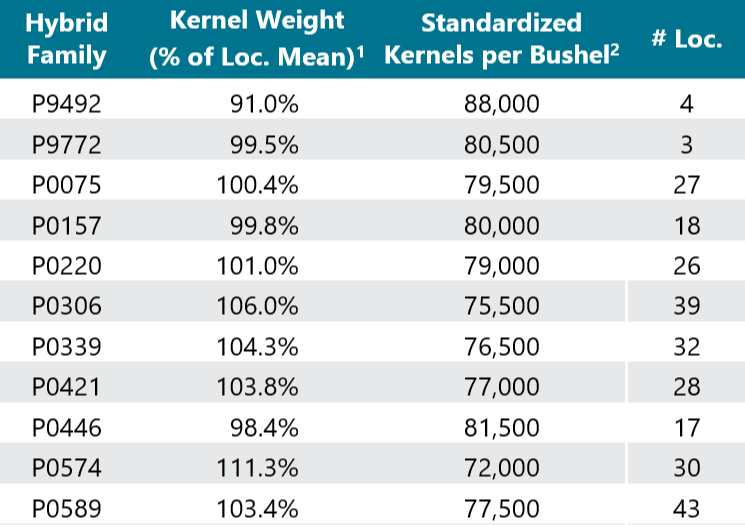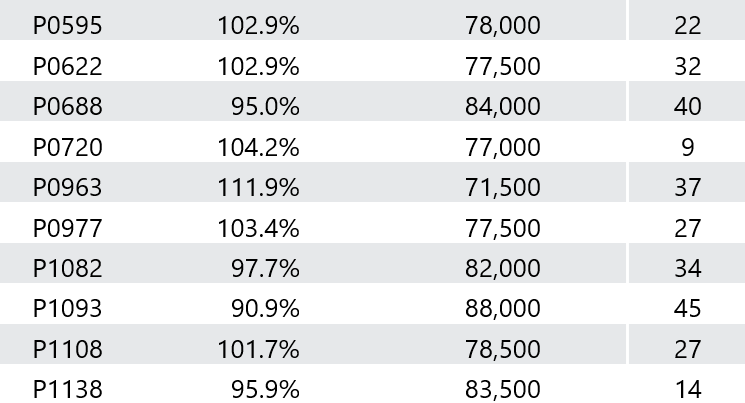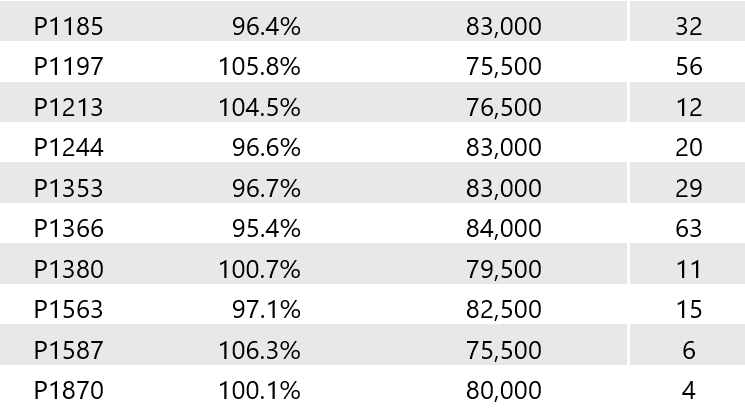How Kernel Weight Varies by Hybrid in Iowa
Written by Ryan Van Roekel, PhD, Dennis Holland, Alex Woodall and Bill Long
11/23/2020
Toot Seed LLC | 515-238-9108
Written by Ryan Van Roekel, PhD, Dennis Holland, Alex Woodall and Bill Long
11/23/2020

Figure 1. Representative kernels from the tip, middle, and butt of an ear from hybrid families with above-average (P1197) and below-average (P1082) kernel weight in 2019. Photo courtesy of Bill Long.
Table 1. Kernel weight as a percentage and standardized kernels/bu by hybrid family.



1Calculated as hybrid kernels per bushel compared to the location average kernels per bushel, then averaged over all locations.
2Calculated as the kernel weight percentage applied to a “normal” value of 80,000 kernels per bushel, rounded to the nearest 500.
3Only hybrids with a minimum of 3 locations were included.
The foregoing is provided for informational use only. Please contact your Pioneer sales professional for information and suggestions specific to your operation. 2016-2020 data are based on average of all comparisons made in over 63 locations through Dec. 1, 2020. Multi-year and multi-location is a better predictor of future performance. Do not use these or any other data from a limited number of trials as a significant factor in product selection. Product responses are variable and subject to a variety of environmental, disease, and pest pressures. Individual results may vary. Pioneer® brand products are provided subject to the terms and conditions of purchase which are part of the labeling and purchase documents.